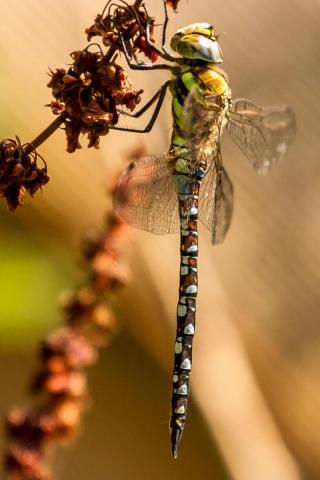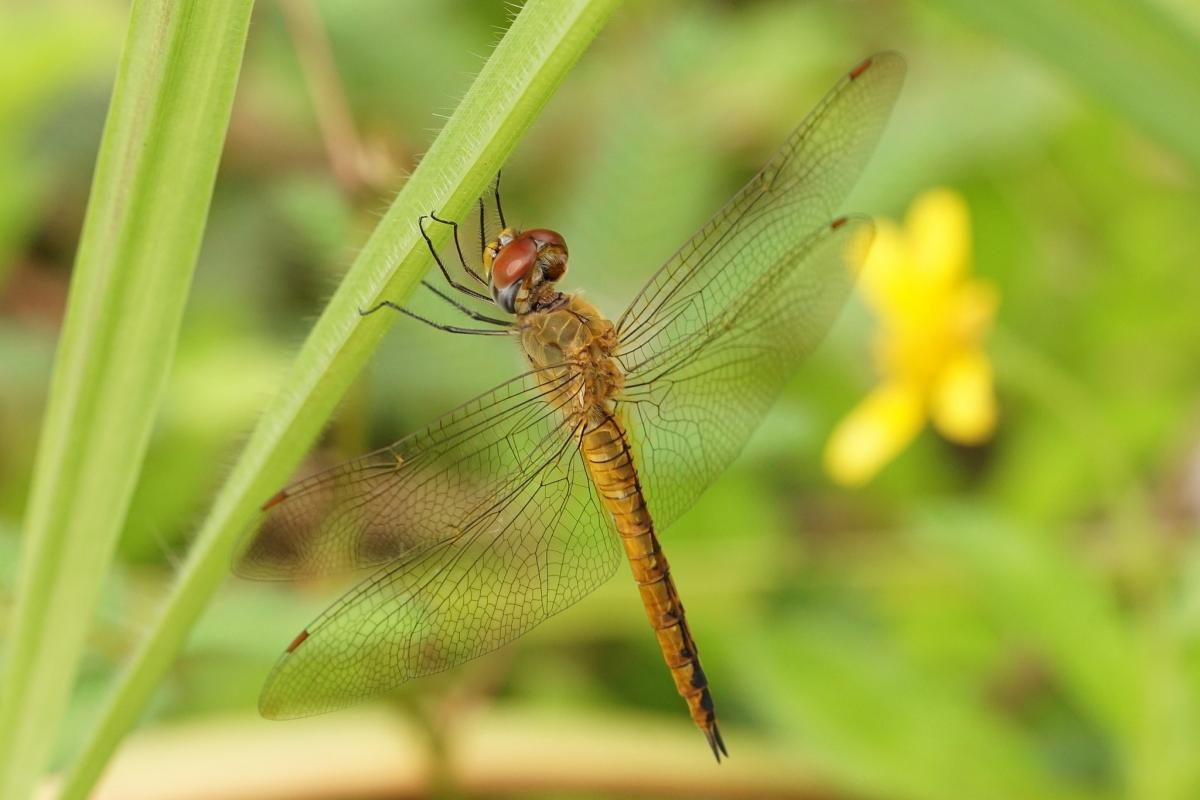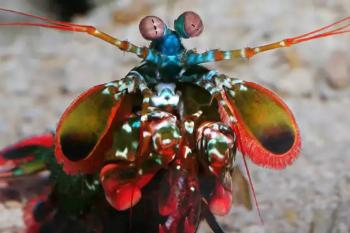
Like monarch butterflies, dragonfly migrations are multi-generational journeys. The dragonflies migrate to maximize breeding opportunities in warm water ponds. They build up fat reserves before setting off, just like migratory songbirds do. And some species even follow the same migratory pathways as songbirds. Dragonflies can fly up to 100 miles a day (160 km). People have observed dragonfly migrations on every continent except Antarctica.
Green darners, fly each summer to the northern U.S. and Canada to breed. Their offspring return south in the fall. If you’re lucky, you might see these and other species as they fly south by the millions. About 16 of 326 North American species migrate. The major migratory species in North America are: common green darner (Anax junius, wandering glider (Pantala flavescens), spot-winged glider (Pantala hymenaea), black saddlebags (Tramea lacerata), and variegated meadowhawk (Sympetrum corruptum).
The wandering glider (Pantala flavescens) is the champion dragonfly migrator. These dragonflies may make migrations of 8,700-11,000 miles (14,000 to 18,000 kilometers) as they search for pools suitable for laying their eggs. This makes the wandering glider the longest insect migrator. These wandering gliders are tiny: one and a-half-inches (four centimeters) long. Riding the winds, often at altitudes of more than 1000 meters, they prey on aerial plankton and small insects as they fly.
Many believe the dragonfly brings happiness, new insights and new beginnings. Some see this beautiful creature as a symbol of prosperity, strength, happiness, change, wisdom, harmony and peace. Makes you see this beautiful little creature in your garden a little differently, huh?

Cool Ways to Learn More About Dragonflies
Did you know there’s a great app for your smart phone to identify species . There even a Citizen Science project to track migrations and observations, the Migratory Dragonfly Partnership.
A scientist noticed, and studied, the relationship between migrating dragonflies and migrating kestrels (a small hawk). Here’s a lesson plan about based on his observations.
Want to learn more about the dragonfly’s ability to hunt? Check this out!
Watch a dragonfly metamorphosis on Shape of Life.
















